Notes From The Archives: Bev Spencer
November 16, 2017
Bev Spencer
Words by: Gary Horstkorta – Sept. 2017
By the 1960’s, sports car racing was a well established sport all around the United States. Purpose-built road race tracks were replacing a good number of the airport and street courses the sport had used in the 1950’s. Another change occurred during the 60’s as a plethora of big horsepower cars were introduced to the race grids with new cars from familiar names like Ferrari, Maserati, Corvette, Cooper and Lotus were now up against new names like Chaparral, Cobra, Genie, GT-40, GT-350 and McLaren. It was an interesting time to say the least.
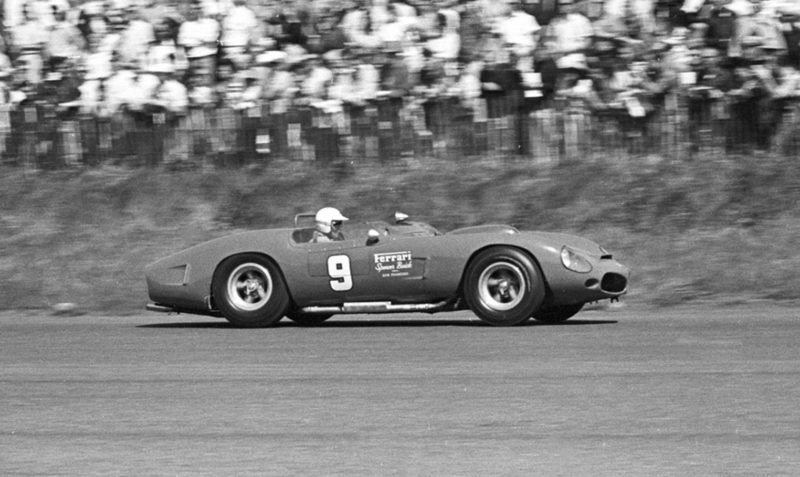
The Spencer Ferrari TR 61 at speed at Vaca Valley 1963
1960 also brought a new name to racing in the SFR, Bev Spencer, a successful San Francisco car dealer with a penchant for Ferrari’s. Spencer, the son of a former executive with the Packard Motor Car Company, had been smitten with cars and racing as a small boy but it was his many trips to watch the races at Pebble Beach where he gained an appreciation for European GT cars. His interest was further enhanced by his friendship with Phil Hill whom he had met several years before in Southern California.
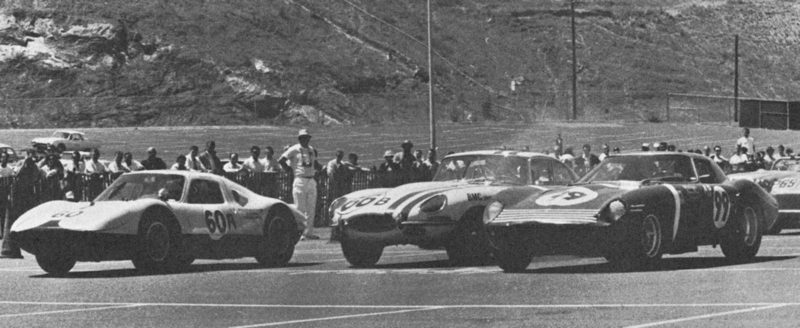
Not far from Spencer’s home on the Mid-Peninsula in the San Francisco Bay Area, was the sports car shop of Rod Carveth Enterprises. Passing by one day, Spencer saw a pontoon fender 250 Testa Rossa in the shop window, a car Carveth had raced all around Europe. The car was for sale and shortly was soon purchased and sitting in Spencer’s driveway. He had the car restored and it became his second Ferrari street car along with a California Spyder. From 1955 and over the next ten years, he would acquire every desirable street version Ferrari available and would become an authorized Ferrari dealer in 1963.
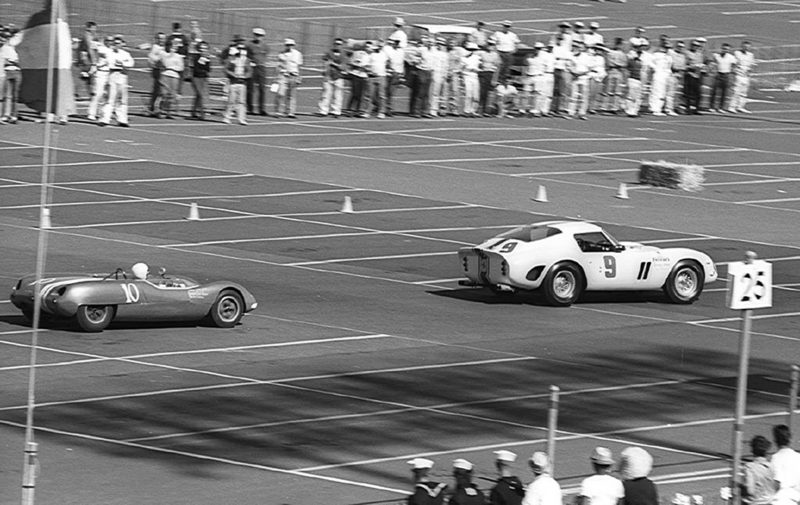
Spencer GTO at Candlestick Park 1963 leads Lotus 23.
With such high powered sports cars in his garage and his interest in racing, it wasn’t long before Spencer joined the fray. His first sponsored entry was a race at Laguna Seca in October 1961 with driver Stan Peterson in a modified Lotus 7 powered by a Spencer supplied Buick V-8 engine.
The next event was at Stockton in April of 1962 again with Peterson and the Lotus-Buick followed by Cotati, where he entered a Buick Skylark which ran in C Modified class with Peterson again at the wheel. In the meantime, Spencer had acquired the ex-Briggs Cunningham Maserati Tipo 151, 4 liter V8 which Peterson would drive at the August race at Vaca Valley. Unfortunately after completing one lap, the car took an off course excursion, flipped over and was out of the race.
Having sold off the Maserati, the California Spyder and the TR, he took delivery of the ex-Pedro Rodriquez Series I Ferrari GTO, in May of 1963. The car would run both Regional and National events into early 1964. Now a Ferrari dealer, it only made sense to add another Ferrari to his racing stable, a TR 61, a car Spencer had seen racing at Candlestick in September. With two cars to race, Spencer engaged the services of Frank Crane and Bill Sherwood to drive both cars in SFR events.
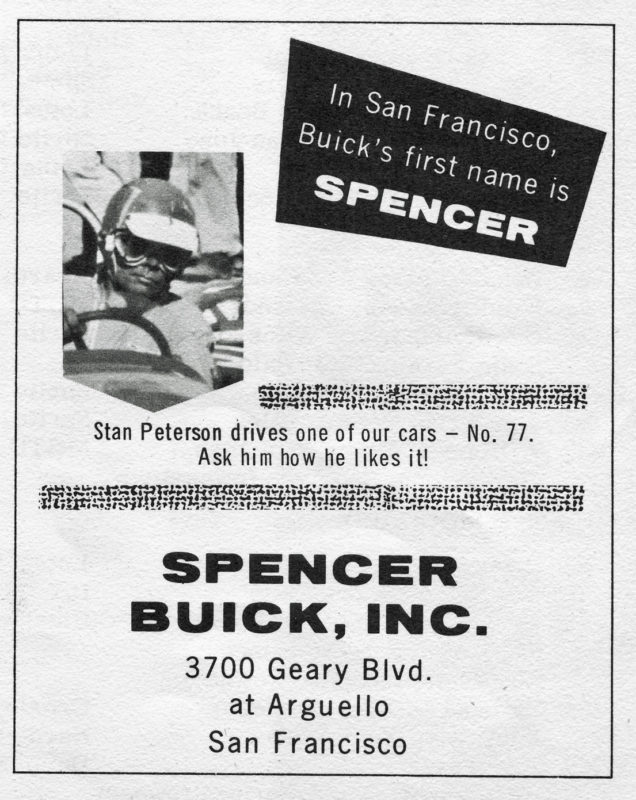
Spencer Buick ad from 1963 race program
Spencer also acquired the ex-Rod Carveth Buick powered Lotus 19 which Phil Hill agreed to drive in the 1963 Pacific Grand Prix. Unfortunately, after a few practice laps, Hill parked the car deeming uncompetitive to drive in the race. The car was soon sold off and replaced with another ex-Briggs Cunningham car, a well seasoned and winning Cooper-Buick.
Unfortunately for Spencer, the cost of running three race cars in competition was beginning to take its toll on his finances. As a result, in mid-1964, he sold the Cooper-Buick and GTO but retained the TR 61 and acquired a Series 2 GTO which he asked Augie Pabst to drive at the second Candlestick Park. Not having the best of luck during the race, Pabst collided with Merle Brennan’s Jaguar, damaging the car. He was able to re-enter the race only to suffer a DNF.
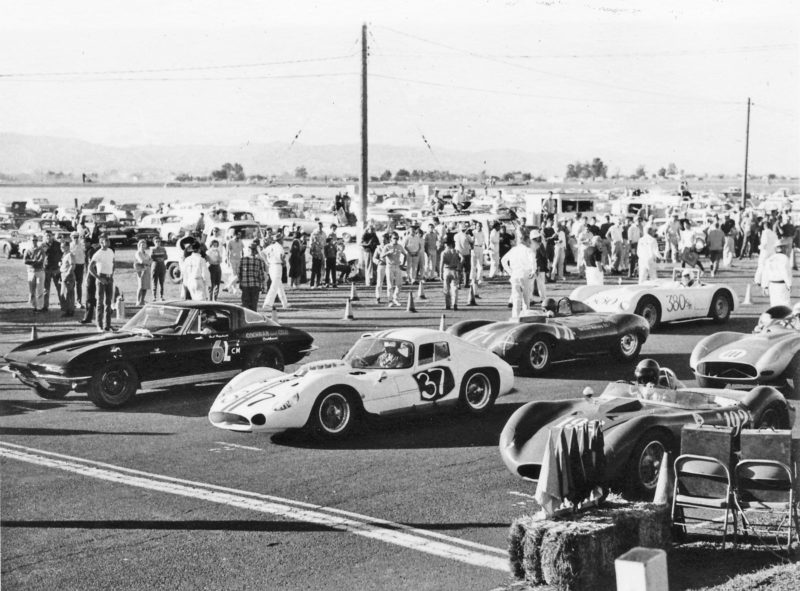
Spencer Maserati Tipo 151 on front row at Vaca Valley 1963
By mid-1965, Team Spencer was winding down, both the TR 61 and GTO were offered for sale, asking price was $6,500 for the TR and $11,500 for the GTO. Anyone car to venture a guess what these cars are worth today? By the end of the year, there was no more racing and the fortunes of Spencer Buick and Spencer himself would take a downward turn. However, it had been an exciting few years racing some of the greatest race cars of that period.
